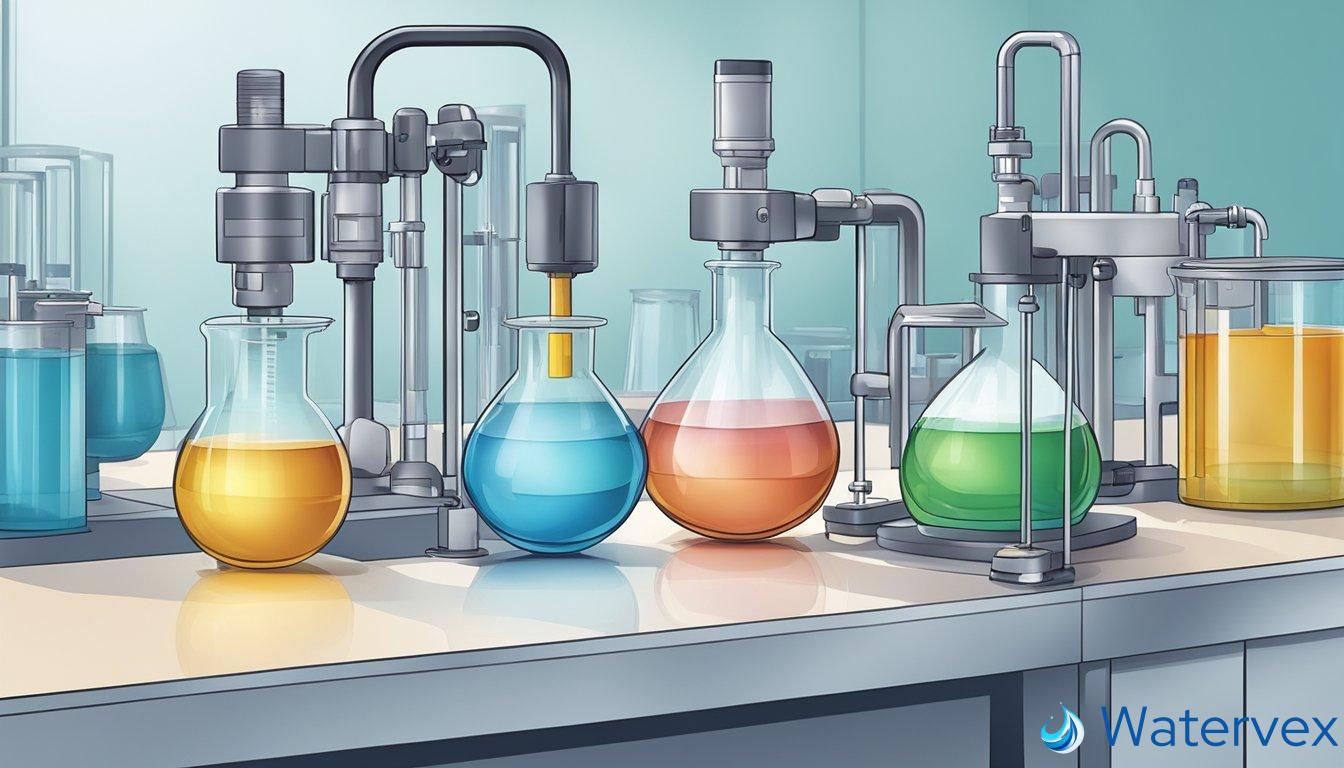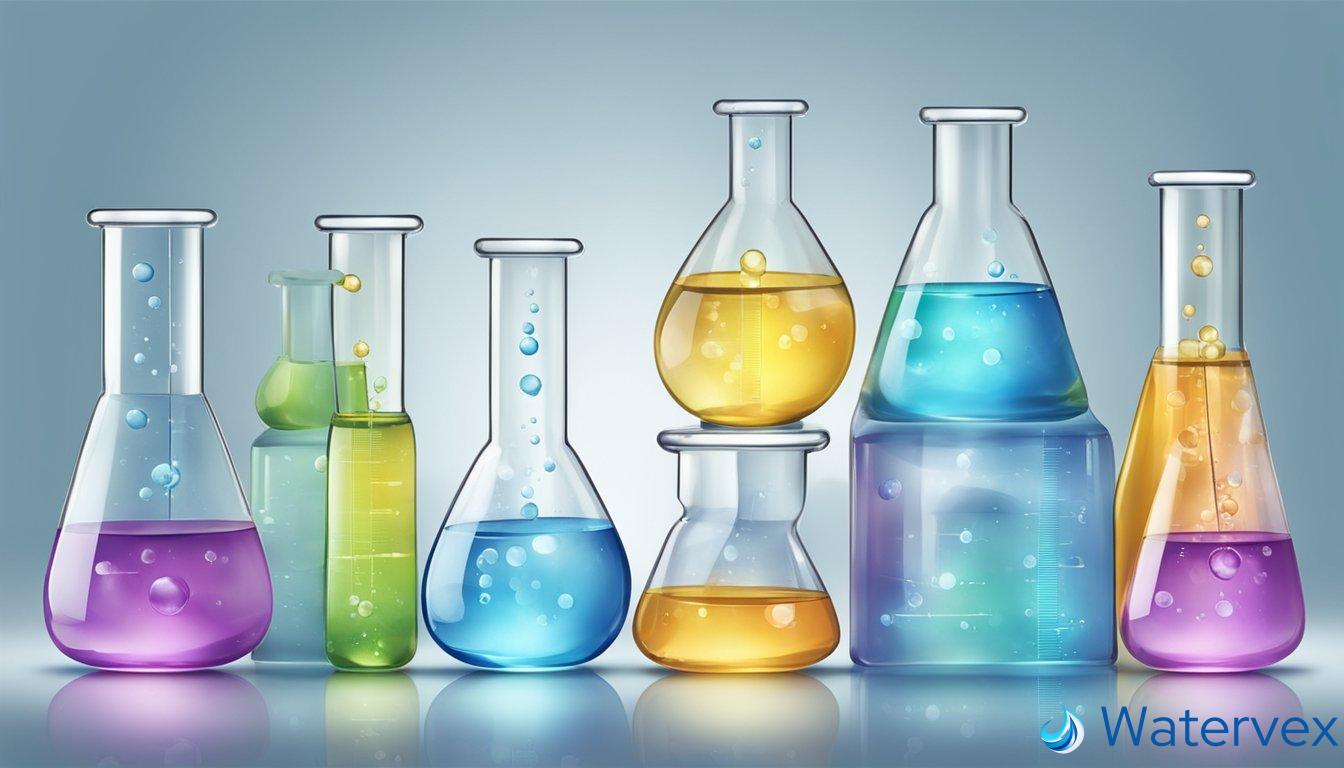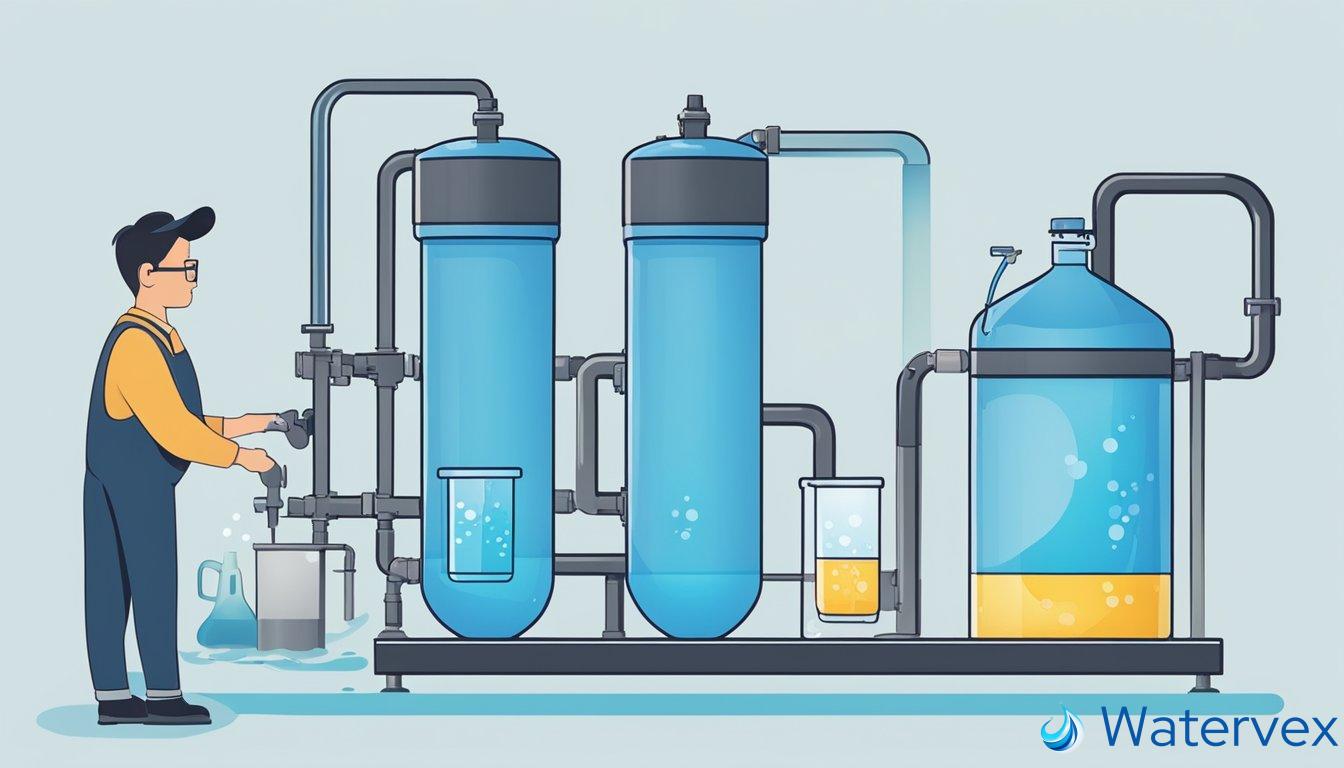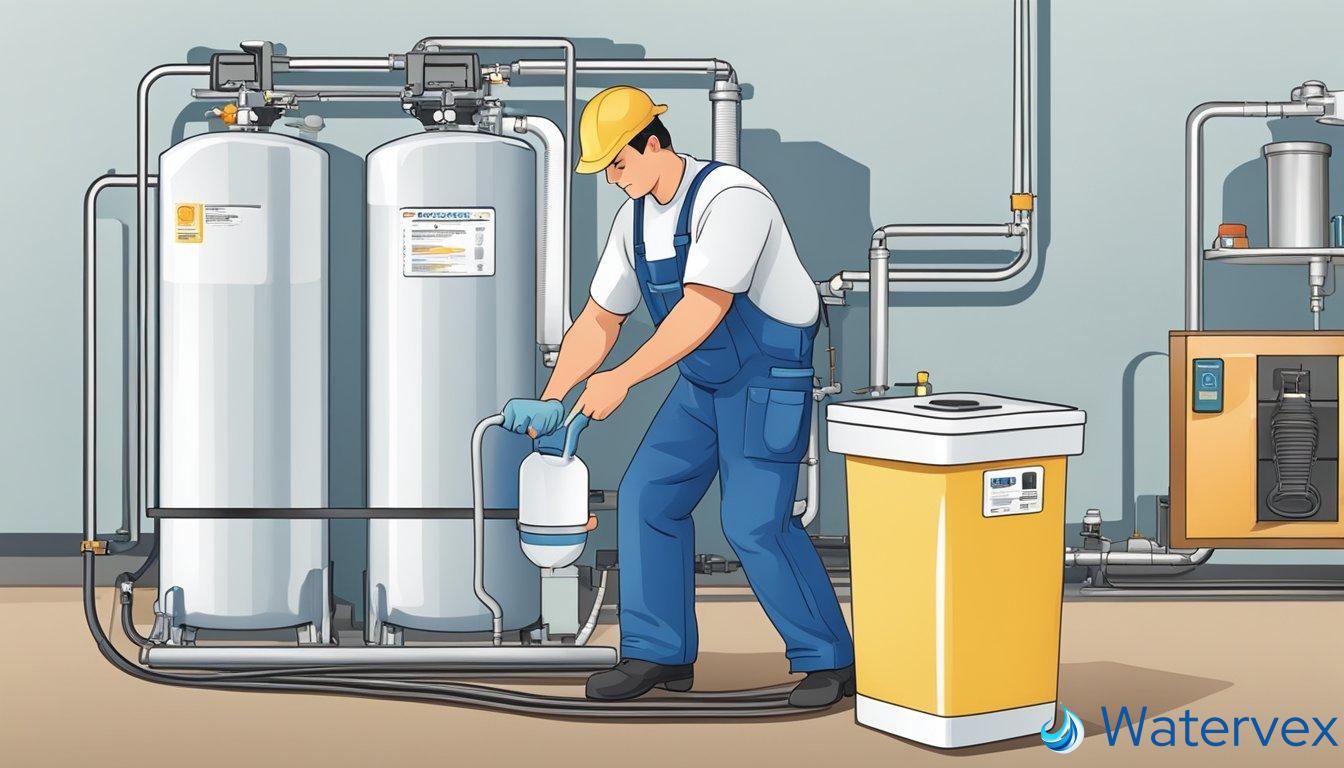Water hardness comes from minerals like calcium and magnesium, which can wreak havoc on your home’s plumbing and decrease the efficacy of soaps and detergents. Water softeners mitigate this problem, and their operation hinges on a straightforward chemical formula that facilitates ion exchange. This process replaces the hardness ions with sodium or potassium ions, softening the water.

Understanding the chemical formulas in water softeners is key to appreciating how they transform hard water into a softened state that’s kinder on your appliances and skin. A standard water softener uses a resin where sodium or potassium ions cling to negatively charged beads until they encounter a hardness ion, at which point they swap places. The resin becomes depleted of sodium ions over time and needs to be regenerated with a brine solution—a high concentration of salt water—to replenish the sodium and discharge the accumulated calcium and magnesium. This cycle ensures that your home consistently enjoys the benefits of soft water, from lather-rich showers to spot-free dishes.
Maintenance is crucial to keep your water softener working efficiently. Regularly checking the salt levels, using the right kind of salt, and occasionally cleansing the resin bed with a cleaner designed for your specific system can prevent problems such as salt bridges and resin fouling. These steps not only extend your water softener’s lifespan but also ensure you’re always provided with quality soft water.
Key Takeaways
- Water softeners use ion exchange to replace hardness ions with sodium or potassium.
- Regular regeneration with brine solution maintains water softener efficacy.
- Proper maintenance extends the life and performance of water softening systems.
Understanding Water Softeners
Water softeners tackle hard water, which contains high levels of minerals like calcium and magnesium. These minerals can cause scale buildup in pipes and appliances, leading to inefficiency and damage. Ion exchange is the central chemical process used in water softening systems, functioning to reduce water hardness.
Here’s how the system functions: As hard water passes through a resin tank, it encounters a bed of small, porous beads, which are saturated with sodium ions. These resin beads operate on a straightforward ion exchange principle, swapping sodium ions for undesirable calcium and magnesium ions. Over time, the beads exhaust their supply of sodium ions and must be recharged.
Recharging involves flushing the tank with a highly concentrated sodium solution from the brine tank. This process strips the calcium and magnesium from the resin in exchange for sodium, refreshing the system’s capacity to soften water.
Filtration is another beneficial byproduct of this system. As hard water percolates through the tank, any sediment or unwanted particles also get removed, thus improving your water quality. You might find it interesting that this softening process doesn’t add significant sodium to your water. Rather, it’s just enough to displace the hard minerals.
Remember, maintaining your water softener is key to ensuring it continues to mitigate the effects of hard water effectively by regularly removing the buildup of calcium and magnesium ions. This maintenance is straightforward, and it essentially involves checking the salt level in the brine tank and periodically running the recharge cycle. The perk? Your appliances last longer, and you say goodbye to unsightly mineral stains.
Chemical Formulas in Water Softeners

In tackling hard water problems, the chemical formulas used in water softeners play a fundamental role. Understanding these can help you improve your water quality effectively.
Components and Function
Sodium Chloride (NaCl) and Potassium Chloride (KCl) are often employed as regenerants in the brine tank of your water softener, where the ion exchange process occurs. This process exchanges undesirable calcium and magnesium ions—the culprits behind water hardness—with sodium ions or potassium ions, depending on the type of salt you use.
- Sodium Chloride: A traditional choice for water softeners, creating a solution that replenishes the system with essential sodium ions.
- Potassium Chloride: Acts similarly as a substitute for those monitoring their sodium intake, providing potassium ions instead during the regeneration cycle.
Zeolite, a synthetic or natural resin within the tank, facilitates the actual ion exchange. Charged with sodium ions, when hard water flows through, zeolite binds with the calcium and magnesium, detaching the sodium which then disperses into the water.
Reaction Formula: Ca²⁺/Mg²⁺ (hard water) + 2Na⁺ (from sodium chloride in brine) → 2Na⁺ (in softened water) + Ca²⁺/Mg²⁺ (attached to resin).
Similarly, sodium carbonate (Na₂CO₃), also known as washing soda, can be used for softening water through the chemical precipitation method, which is different from ion exchange and less commonly used in residential softening systems.
The use of these chemicals must be managed wisely to maintain water quality for your family’s health and to prevent the build-up of minerals in your home’s plumbing systems.
Benefits of Water Softening

Embracing a water softening system in your home results in noticeable upgrades to both your health and everyday domestic operations. You’ll find a foundational improvement in the quality of water, carefully tailored to meet your family’s needs and the demands of your home appliances.
Health Advantages
One of the most immediate benefits of soft water is the improved condition of your skin. Soft water is kinder to skin because it contains fewer minerals that can dry it out. Plus, soaps and detergents dissolve more effectively in soft water, leading to a cleaner feeling without the residual soap scum that hard water often leaves behind.
When it comes to detergents, they also get a boost in efficiency. You’ll need less detergent to achieve the same cleaning power which equals savings in your household budget and a step forward in reducing your environmental footprint.
Home and Industrial Applications
Soft water plays a pivotal role in the lifespan of plumbing and pipes throughout your home. By minimizing the buildup of limescale, water softening systems help prevent potential blockages and maintain the condition of your pipes, ensuring a steady flow of water.
In an industrial context, the benefits expand even further. Industries that use boilers or heavy machinery see a definitive improvement in operational efficiency with soft water. Manufacturers indicate that soft water contributes to the longevity of machinery, as it inhibits scale buildup that could otherwise lead to outages and costly repairs.
Water Softener Maintenance

Ensuring your water softener functions effectively involves consistent monitoring and timely upkeep, specifically focusing on regular care and efficient regeneration. Both contribute to the maintenance of water quality and the longevity of your system.
Regular Care and Regeneration
Regular Care: At the heart of your water softener’s efficient operation is the mineral tank, which houses resin beads that perform the crucial task of softening hard water. These beads attract and hold on to minerals like calcium and magnesium, removing them from your water. To maintain peak performance, it is essential to check the salt levels in the brine tank monthly, supplementing when they fall below half. Use a pure grade, like evaporated salt pellets, since they are cleaner and more soluble than other types.
- Checking Salt Levels: Ensure the water level is appropriate when refilling.
- Prevent Salt Bridges: Look for solid crusts that may form and prevent salt from dissolving into the brine. If you spot any, break them carefully.
- Clean the Tank: Over time, salt can create sediment buildup; clean the tank annually to avoid this.
Regeneration Cycle: Regeneration, the process which renews the resin’s softening capacity, is pivotal and should be calibrated to your water’s specific hardness levels. If your water has a concentration of 30 grains per gallon (GPG), set your softener to regenerate accordingly. For those using parts per million (PPM), the conversion is simple: PPM/17.1 = GPG.
- Optimal Settings: Adjust your unit’s settings based on accurate water hardness tests at least once a year.
- Efficient Use of Salt: A proper regeneration cycle should use the correct amount of water softener salt to create the brine solution without waste.
- Frequency: Set the regeneration frequency in line with your water usage and hardness level to maintain the water quality without overburdening the system.
Adhere to these maintenance and regeneration guidelines, and your water softener should continue to provide you with high-quality soft water. Remember, proper care not only contributes to better water but also enhances the longevity and effectiveness of your water softening system.

